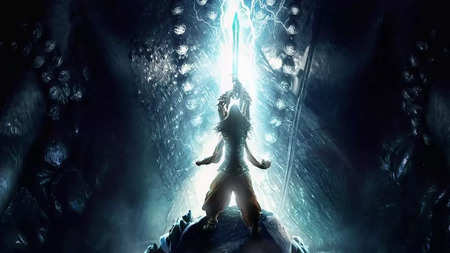Where is ashwatthama after mahabharat | महाभारत के बाद अश्वत्थामा कहां हैं?
In the Mahabharata, Ashwatthama's fate after the war is mentioned briefly. After being cursed with immortality and eternal suffering by Lord Krishna and the Pandavas for his heinous actions during and after the Kurukshetra war, Ashwatthama's whereabouts become somewhat of a mystery. The epic does not provide extensive details about his post-war life and activities. However, there are some later texts and traditions that offer varying accounts of what happened to Ashwatthama after the Mahabharata war:
महाभारत में युद्ध के बाद अश्वत्थामा के भाग्य का संक्षेप में उल्लेख किया गया है। कुरुक्षेत्र युद्ध के दौरान और उसके बाद अपने जघन्य कार्यों के लिए भगवान कृष्ण और पांडवों द्वारा अमरता और शाश्वत पीड़ा का श्राप दिए जाने के बाद, अश्वत्थामा का ठिकाना कुछ हद तक एक रहस्य बन गया है। महाकाव्य उनके युद्धोत्तर जीवन और गतिविधियों के बारे में विस्तृत विवरण प्रदान नहीं करता है। हालाँकि, कुछ बाद के ग्रंथ और परंपराएँ हैं जो महाभारत युद्ध के बाद अश्वत्थामा के साथ क्या हुआ, इसके अलग-अलग विवरण प्रस्तुत करते हैं:
Wandering as a Cursed Being: According to some traditions and folklore, Ashwatthama is said to have wandered the Earth as a cursed and tormented being. His curse included having a constantly oozing wound on his forehead that caused him great pain and suffering.
एक शापित प्राणी के रूप में भटकते हुए: कुछ परंपराओं और लोककथाओं के अनुसार, अश्वत्थामा के बारे में कहा जाता है कि वह एक शापित और पीड़ित प्राणी के रूप में पृथ्वी पर भटकते थे। उनके अभिशाप में उनके माथे पर लगातार रिसते घाव का होना भी शामिल था जिससे उन्हें बहुत पीड़ा हुई।
Living in Isolation: Some texts suggest that Ashwatthama lived in isolation, avoiding contact with other people due to his cursed condition. He was believed to be an outcast and a pariah.
अलगाव में रहना: कुछ ग्रंथों से पता चलता है कि अश्वत्थामा अपनी शापित स्थिति के कारण अन्य लोगों के संपर्क से बचते हुए, अलगाव में रहते थे। ऐसा माना जाता था कि वह बहिष्कृत और अछूत था।
Transformation into an Owl: In certain regional stories and folklore, it is believed that Ashwatthama was transformed into an owl as a result of his curse. In these accounts, he is said to roam the night skies as a symbol of his cursed existence.
उल्लू में परिवर्तन: कुछ क्षेत्रीय कहानियों और लोककथाओं में, यह माना जाता है कि अश्वत्थामा अपने श्राप के परिणामस्वरूप उल्लू में बदल गया था। इन वृत्तांतों में, कहा जाता है कि वह अपने शापित अस्तित्व के प्रतीक के रूप में रात के आसमान में घूमता है।
Vedic Scriptures: There are references to Ashwatthama in various Vedic texts, such as the Puranas and some regional scriptures, which mention his continued suffering and isolation.
वैदिक ग्रंथ: विभिन्न वैदिक ग्रंथों, जैसे पुराणों और कुछ क्षेत्रीय ग्रंथों में अश्वत्थामा के संदर्भ हैं, जिनमें उनकी निरंतर पीड़ा और अलगाव का उल्लेख है।
It's important to note that the Mahabharata itself does not provide a comprehensive account of Ashwatthama's post-war life, and the details can vary in different traditions and retellings of the story. Ashwatthama's character and fate continue to be a subject of interest and interpretation in various forms of literature, folklore, and religious texts within Hinduism.

Comments
Post a Comment